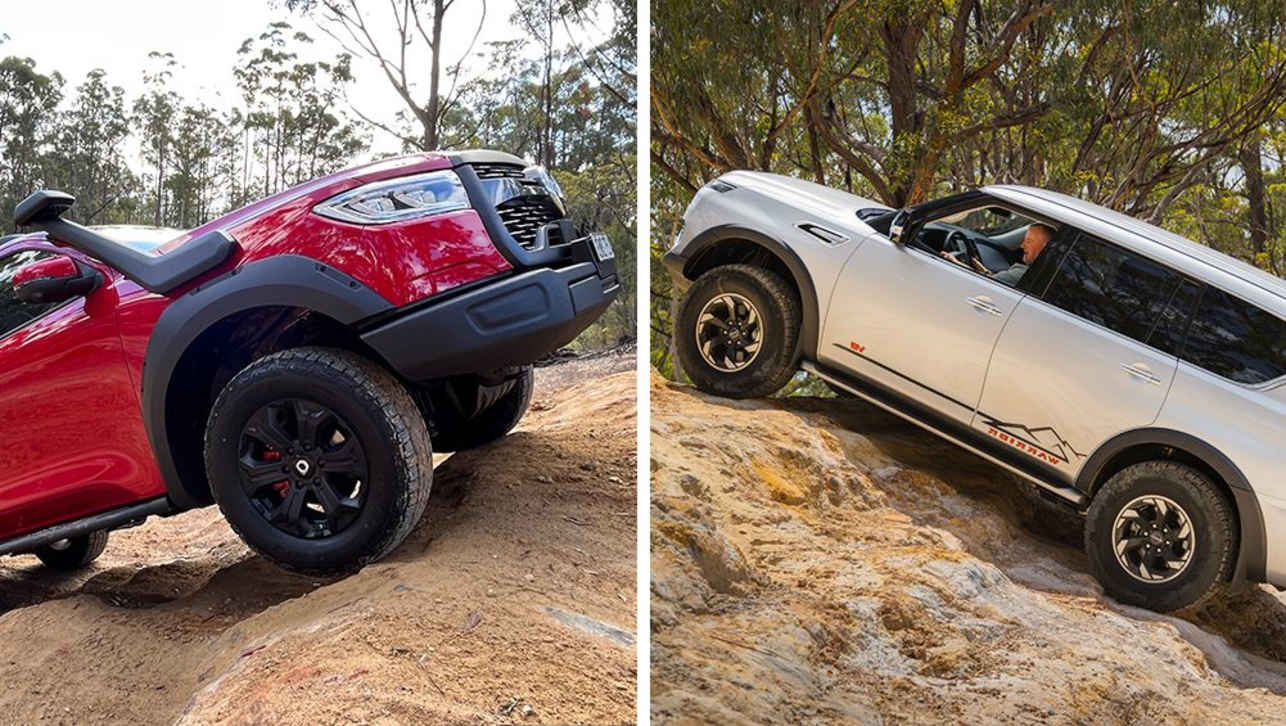Isuzu isn’t quite ready to talk about what lies beyond its famed 4JJ3-TCX diesel engine - which resides in its only two passenger cars in Australia - but has pointed to what the future might hold when talking to CarsGuide at the launch of the new MU-X.
The Japanese brand’s general line thus far is that it doesn’t talk about “future product” – including the electrification of the D-Max and MU-X pair - stating only that it will be ready when there is a “customer demand” in the ladder-chassis field in which it plays.
However, when pressed on the brand’s announcement of a collaboration with Honda on hydrogen-electric technology, and where it stands on the argument of battery electric (BEV) vs hydrogen fuel cell (FCEV) for the replacement of diesel, the brand’s executives had more to say.
“We need to be prepared for where the direction will be. Our technology will be based on what customers demand in the future, but there needs to be a balance when it comes to new power generation. We need to think about both what the customer demands and the price at which we can offer the technology,” the brand’s managing director, Hiroyasu Sato, explained.
“Isuzu is leaving no stone unturned for the future; we believe there will be multiple solutions.
“Overseas, we are talking about the expansion of sales of battery-electric trucks, Toyota [not just Honda] is also collaborating with Isuzu – we will be able to provide valuable customer usage data for both the private and professional sector [when it comes to developing new drivetrain tech].”
.jpg)
Isuzu’s representatives indicated that the brand did not consider hydrogen fuel cells as the sole future replacement of diesel – the direction which its Hyundai rival is leaning into internationally.
Peering into Isuzu’s mid-term business plan for 2024 aligns the comments of the brand locally with its future drivetrain tech relying on collaborations and multiple solutions.
Interestingly, Isuzu’s “carbon neutral strategy” is out by at least 10 years compared to other brands, with combustion still a factor of its development well into the 2040s, and “promoting spread of EV use” not earmarked until the mid-2030s.
However, in 2022, Isuzu will launch a production-series battery-electric light duty truck and will also begin experimenting with a hydrogen fuel cell heavy-duty vehicle. The brand’s “tests under various use scenarios” across its main range of light- and heavy-duty commercial vehicles is noted to last into the 2030s. It also plans for its latest brand acquisition, UD Trucks (once Nissan’s commercial division), to demonstrate SAE Level 4 autonomy in the coming years.
.jpg)
Other technologies Isuzu has experimented with internationally include a compressed natural gas (CNG) version of its N series light commercial truck, a diesel hybrid version of the N series, and even a version of an engine which burns dimethyl ethel (a natural gas byproduct), which is said to have very low emissions.
Of all the passenger car brands on sale in Australia, Isuzu Ute is perhaps the least under pressure to electrify its passenger car range. Customer demand is still well and truly in the diesel camp for large SUVs and utes, and Australia is the largest export market in the world for the Thai-built D-Max and MU-X. With European emissions standards barely a factor for the D-Max and MU-X in their largest markets, there is little incentive for the brand to push on electrification in the short term.
While there's no sign of hybridisation in the brand's new-generation D-Max and MU-X pair, the MU-X has a new set of particulate filters which comply the SUV with Euro 5b emissions standards.







.jpg)
.jpg)
.jpg)

.jpg)
.jpg)
.jpg)


.jpg)

.jpg)
.jpg)
.jpg)



.jpg)
.jpg)




Comments